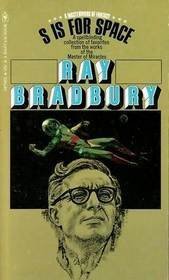
I Sing the Body Electric! & Other Stories
Book Description
Imagine a world where robots whisper secrets of love and machines dream. In "I Sing the Body Electric! & Other Stories," Ray Bradbury ignites the imagination with tales that blur the lines between humanity and technology. Each story vibrates with electric tension, exploring the depths of desire, fear, and the fragile connections that bind us. From eerie landscapes of the future to tender moments in the present, Bradbury weaves a tapestry of emotion that grips the heart and challenges the mind. What happens when the soul seeks connection in a cold, mechanical world?
Quick Book Summary
"I Sing the Body Electric! & Other Stories" is a compelling collection by Ray Bradbury, blending science fiction, fantasy, and horror to examine the intersection of humanity and technology. The stories explore how people seek connection and meaning in worlds dominated by machines, artificial intelligence, and speculative futures. Bradbury uses his trademark poetic style to evoke wonder, nostalgia, and unease. Each tale examines universal themes—love, loss, hope, and fear—in settings that range from distant planets to familiar suburbs. At the heart of the collection is the question of what it means to be alive, exploring both the resilience and vulnerability of the human spirit as it grapples with the advances and uncertainties of the modern age.
Summary of Key Ideas
Table of Contents
Human Connection in a Technological Age
Bradbury’s stories excel at capturing the tension between the technological and the human. In several tales, robots or mechanical beings assume roles traditionally reserved for humans—caretakers, companions, or even family members. The eponymous story, for instance, presents an artificial grandmother designed to comfort and nurture grieving children. Through such narratives, Bradbury delves into how technology can both bridge and widen the gap between people, questioning whether empathy and emotional depth are exclusive to human experience.
The Ambiguity of Progress
Progress is seen as a double-edged sword throughout the collection. Many stories highlight the wonders wrought by invention and discovery but also showcase the unforeseen consequences that accompany them. Whether imagining a future where bodies are replaced by machines or depicting the subtle ways daily life is altered by technological enhancements, Bradbury remains alert to the costs of progress—alienation, loss of identity, and the erosion of genuine connection.
The Nature of Fear and Loss
Fear and loss permeate these stories, manifesting in both supernatural encounters and intimate personal tragedies. Bradbury employs horror not merely for shock, but as a lens through which to interrogate the fragility of life and the limits of understanding. The unfamiliarity of new worlds or mechanized replacements becomes a metaphor for grief and the fear of irreparable change. By externalizing these anxieties, Bradbury allows readers to face underlying truths about mortality and emotional vulnerability.
Imagination and Memory as Survival Tools
Imagination and the act of remembering play vital roles as coping mechanisms for the characters. The stories frequently invoke dreams, childhood recollections, or acts of creative defiance in the face of oppression. Bradbury suggests that the human capacity to imagine other possibilities offers a path to survival and even transcendence, allowing for meaning to persist in even the bleakest circumstances. The stories champion memory and fantasy as bastions of individuality and hope amid an increasingly mechanized world.
Defining Humanity Beyond Biology
Ultimately, Bradbury interrogates what defines humanity. His characters are forced to examine their nature through the mirror of the artificial: robots who mimic love, machines that simulate memory, or technologies that replicate human touch. The result is a powerful meditation on the elasticity of identity and the essence of life. Bradbury neither condemns nor glorifies progress; instead, he invites readers to reflect on what is truly essential—compassion, empathy, and the enduring search for connection.
Download This Summary
Get a free PDF of this summary instantly — no email required.





